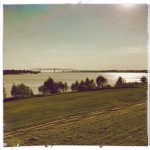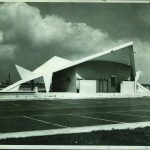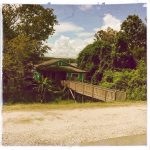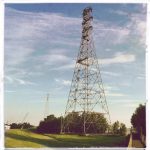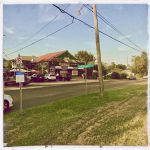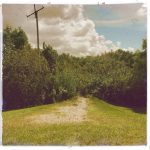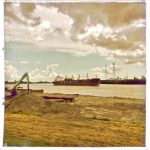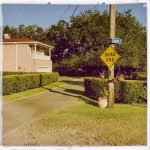
11 Oct New Orleans Report, Pt. Trois + Matador Playlist 9/21/17
Welcome back, Gentle Reader(s), to the third report from New Orleans for 2017, with the added bonus of Ye Olde Matador Playliste. It has been nearly two months since my last posting and in the intervening days I have been traveling back and forth betwixt and between Ink North and Ink South whilst doing my best to keep body and soul in a relatively sound state of repair (the mind being another matter altogether). Central to the satisfactory pursuit of this goal is regularly climbing aboard the varied fleet of Inkcycles resident in my far flung locales to take to the streets and trails to observe and consider life’s rich pageant. Riding the bicycle is an undertaking of quasi-religious import for Your Humble Narrator, providing exercise, pleasure, excitement, contemplation, and a much-needed respite from the woes and cares of life in these trying times. I am resolute in my conviction that the bicycle is not only the finest mode of transportation ever devised, but also one of mankind’s greatest inventions overall. Regardless of whom one credits the origination of human-powered two-wheeled transport with (the various claims are well laid out here, through the good graces of Wikipedia), the bicycle makes the world a better place. This I truly believe.
Bicyclistic evangelizing aside, for practical considerations there is no better way to get to know a place than by bicycle. Walking is certainly the best option in a densely urban setting (I have no desire whatsoever to ride a bike in New York, for instance) but to experience the most in the least amount of time, the bicycle has no peer. I grew up automotively deprived in New Orleans, depending on a bike and the streetcar for transport. I always enjoyed riding, but in those days when I rode my bike I was generally going somewhere specific (like the K&B at Louisiana and St. Charles, where one of my bikes was stolen back in the early ’70s). Until a bicycle was added to the Ink South household early in 2015 I hadn’t been on two wheels in my hometown since 1979. Astride a sturdy new Trek, I devised various routes to wind my way uptown via the side streets between Magazine and St. Charles Avenue. My first destination was and remains Audubon Park for a few warmup laps around International Drive, which circles the park’s golf course and lagoon. The drive has been closed to motorized traffic since the early ‘80s and it’s one of the most enjoyable rides in the city. My biking routes, regardless of locale, generally follow one primary rule: Go thee away from the traffic. After riding the 1.8 mile circuit around the park for a period of time I eventually headed across Magazine Street towards the Fly, where I discovered that there was now a paved, two lane trail atop the levee. As with International Drive, motorized traffic is prohibited. The Mississippi River Trail, as it is formally known, begins at the Uptown side of Audubon Park and extends upriver to the Bonnet Carré Spillway above Norco—a distance of about 25 miles.
The levee trail offers an unparalleled opportunity to experience both the river and the city simultaneously, an aspect of New Orleans that many people never see. The trail is populated with bikers both serious and casual, walkers, joggers, and the occasional horseback rider. Although I consider myself a fairly serious biker I generally don’t look like one, my attire being more suggestive of someone on their way to the beach than the Tour de France. In New Orleans I typically wear flip flops when I’m riding. At peak times on the levee trail one might encounter a few dozen people riding or jogging, but at other times one can bike for miles without encountering a single soul. Most bicyclists acknowledge one another with a casual wave or the lift of a couple of fingers off the handlebars as they pass by and most everyone on the levee trail is friendly and observant of the rules of the road.
The levee trail begins at the road up to the Fly, initially along the bottom of the levee beside the railroad tracks. The first landmark of note is the Army Corps of Engineers complex, situated on the levee side of the trail near the Riverbend. The Army Corps and their expertise, or lack thereof, has been a controversial topic since Katrina and the failure of the canal floodwalls and levees. The Corps’ location along the river brings up one aspect of the levee that has long been a mystery to me: Under whose jurisdiction does this land fall? Apparently, some stretches of the levee are federal property while other portions of it are under the auspices of the various parishes or perhaps the Orleans Levee Board (which, although it officially no longer exists as of 2007, apparently maintains its own police force, whose vehicles can occasionally be found patrolling along the trail). Security appears to be a priority at the Army Corps and the two access points to the property have armed guards and lots of foreboding signage suggesting that dropping in just to say ‘Hi’ is not encouraged. Once past the Army Corps, the trail moves up to the top of the levee where it remains for the duration of its run.
One intriguing manifestation of the administrative gray zone in which the levee exists are the batture houses. These simple wooden structures are typically built out from the river side slope of the levee, raised up on pilings, hopefully to a level above the high water mark. At one point in time there were over 100 batture houses, commonly referred to as ‘camps,’ along a stretch of levee extending upriver from Audubon Park to the Jefferson Parish line. Almost all of these were torn down in the mid-‘50s when the levees were expanded. I’ve never known any of the people who live in the camps, but I did attend a party at one a few years ago at Oak Street and the batture. The place seemed to possess all mod cons, as the Brits say, but having the river lapping at the edge of the lower patio seemed a bit precarious. It was late June after a terrific thunderstorm and the humidity was unbelievable. There were multi-leveled decks and stairs descending to the water, and when I leaned back against a railing the spongy wood gave way, nearly spilling me head over heels into the silty muck below.
Nowadays there remains a cluster of about a dozen batture camps just across the line in Jefferson Parish between the two giant pylons that string electrical cables across the Mississippi. Local lore has it that no new camps can be built on the batture and that the existing structures were grandfathered in under obscure ‘squatters’ rights.’ As to who, exactly, owns the land and why the few remaining camps have been allowed to remain, no one seems to know. I’ve been told that while the batture houses have access to the usual utilities it is impossible for them to obtain homeowners insurance and they pay no property taxes and have no mail delivery. Some batture dwellers have expressed the opinion, not without foundation, that those on the city side of the levee are more likely to experience flooding than they are. A Tulane professor named Oliver Houck has written a book about this unique community, titled ‘Down on the Batture,’ and here’s a link to a good NPR story on the topic.
Continuing upriver with the Huey P. Long Bridge coming into view across the water, the Rivershack beckons from the corner of Shrewsbury Road, offering respite from the rigors of a levee bike ride. Tempting though the thought of a cold Dixie draft might be, I’ve found that beer and bike riding—particularly distance riding—don’t go together particularly well. The Rivershack has been around for 27 years now but it was not until recently that I darkened the doorway of this former turn-of-the-century grocery store. As the Commodore has become increasingly disinclined to venture beyond the confines of Old Jefferson, the Rivershack has become our confab place of choice. On our most recent visit we sat on the steps at sunset and watched the joggers and bike riders going by up on the levee trail until ravenous mosquitoes just slightly smaller than hummingbirds chased us back inside.
A couple of blocks further on is the Magnolia School where my late half-brother Erik boarded when he was a boy in the early 1950s. Directly across River Road from the school is a shell path leading up one side of the levee and down the other to an opening in the densely wooded batture. I’ve long intended to follow the path down to the small clearing at the other end (plainly visible from above in satellite imagery) but I have yet to do so. I wonder if the kids from Magnolia School, perhaps even Erik, would ever wander down the path and on to the edge of the river to watch the ships go by.
Just past the sprawling Ochsner Medical Center complex in Jefferson the batture widens out to accommodate numerous large ponds, marshes and meadows that are largely invisible from the levee during the warmer months, hidden behind a wall of lush foliage. This string of wetlands extends out past the riverbend in Harahan and I’m fascinated by the notion that they might comprise a series of discrete, isolated ecosystems populated with unique varieties of wildlife—perhaps some albino nutria, two-headed alligators, giant glow-in-the-dark snapping turtles or, as Woody Allen hypothesized in Sleeper, a monster with the body of a crab and the head of a social worker. The opportunity for some intrepid naturalist to make their reputation is ripe for the picking.
The mighty Huey P. Long Bridge towers above the levee about five miles out the trail from Audubon Park. This monumental structure was completed in December, 1935, and was named in honor of its patron, the Kingfish hisself, who was gunned down by a disgruntled ophthalmologist just three months earlier at the state capitol in Baton Rouge. The Huey P. was the first bridge to cross the Mississippi south of Vicksburg, some 200 miles to the north. The central span rises to 135 feet above the water and as it was built to accommodate rail as well as automotive traffic it is exceptionally flat with extremely long ramps on either side. The massive concrete piers have gothic arches that lend a certain severe dignity to the structure and I often pause underneath to marvel at its immensity and catch the only patch of shade available on the ride. I drove across the Huey P. a few times in my youth and it was a genuine white-knuckle experience as the lanes were only nine feet wide with no shoulders. A $1.2 billion widening project was completed in the summer of 2013 and the bridge now boasts three 11-foot car lanes in each direction. Now that’s just no fun at all.
Up until about a mile and a half past the Huey P. the ride along the levee remains a resolutely urban experience, on the landward side at least. There are industrial parks, self storage facilities, strips of small businesses, body shops, marble counter top contractors, cross-fit gyms, car stereo stores, a couple of screenprinting shops, a leather distributor, an off-road vehicle dealership, and lots of ‘supply’ companies that supply who knows what to who knows who. There’s also the distribution warehouse for good ol’ Big Shot soda, a flea market, and a couple of horse stables. On the river side of the levee there are a variety of maritime-related businesses, mainly having to do with barges. Eventually the terrain begins to take on a more suburban feel. The traffic on River Road thins out, the homes become larger, the lots more spacious, and in-ground swimming pools become increasingly common. As one passes into Harahan a large park-like expanse opens up along the levee. There are crumbling tennis courts, a disheveled clubhouse, ramshackle maintenance sheds and an empty swimming pool. The former Colonial Golf and Country Club shut down in 2012, leaving its 88 acres of prime real estate to decline into genteel neglect, like something from a Walker Percy novel. But not for long. The owners of the property are aiming to develop 15 acres that front onto Jefferson Highway into commercial lots—a proposal that goes before Harahan’s Planning and Zoning Council this very evening (October 11), with more such proposals sure to come. No more Love In the Ruins in Harahan, alas.
One interesting aspect of the levee is the road that runs along it from just above Audubon Park all the way up to Baton Rouge with only minor diversions along the way (such as at the Colonial Golf and Country Club where it diverts to Jefferson Highway for a distance). For the majority of its length this thoroughfare is known as River Road but it is designated at various points as Leake Avenue, Riverside Drive, Jefferson Highway, Highway 44, Highway 942, Highway 75 and Highway 327 before evaporating into a grim industrial zone a stone’s throw from the state capitol building. At its southeastern terminus the river road, in its guise as Leake Avenue, comes to an end literally in the front yard of the house at the corner of South Front Street. It appears that, for all practical purposes, South Front Street serves as these folks’ driveway.
I grew up two blocks from the Mississippi, watching ships pass by from my upstairs bedroom window, hearing the foghorns at night. I’ve always been fascinated by the river traffic, the wharves, the life of the riverfront. When I was a kid we used to be able to walk out onto the docks at the foot of Napoleon Avenue to stroll up and down to look at the ships and watch the longshoremen at work. I knew a merchant seaman named Ted when I was a teenager and when he was in town all you needed to know was which wharf his ship was docked at and you could walk on out there climb aboard for a visit. I attended high school a block from the Mississippi at the Riverbend and my posse of adolescent drug fiends would sneak across Leake Avenue at lunchtime to smoke pot down in the wooded batture. We’d wander around in there for hours, finding strange things that had washed up from the river, meeting old men pulling giant blind catfish out of the river on handheld lines, coming across wild batture houses, built flat on the ground instead of on pilings, constructed entirely from salvaged timber and scrap metal. There were decrepit barges along this stretch of the river, moored to the riverbank with huge metal hawsers. If we were feeling brave we would climb out onto the barges to explore, dodging the rivermen on tugboats who would shoot at us with pellet guns if we were spotted. Occasionally Brother JB and I would take what we called a ‘Huck Finn day,’ skipping school to hang out at the base of the pylons by the parish line, eating our peanut butter and jelly sandwiches out of brown paper bags and waving at the sailors on ships from all around the world that steamed by. I lost my virginity to a teenage hippie girl in a sleeping bag down in the batture one balmy Friday afternoon in 1976.
There was no paved trail on the levee when I was a kid but now that there is I take advantage of it most everyday when I’m in New Orleans, weather permitting. The basic fixed elements of the levee trail ride remain very much the same but the people, the flora, the fauna, the weather and the river traffic are different every day—new sights to see and a new adventure on every ride.
Last but not least, here’s a Matador Playlist for ye. This installment was from a couple of weeks before the sudden passing of Tom Petty, so RIP Tom! You shall be missed.
Matador Playlist 9/21/17
Grammar of Life – Charles Bukowski
Magdalena 318 – the Pixies
Superfly – Curtis Mayfield
Get Rhythm – Johnny Cash (request)
They’ve Got A Bomb – Crass
Have A Cigar – Pink Floyd (request)
Horse Pills – the Dandy Warhols
Sheela-Na-Gig – PJ Harvey
She Said She Said – the Beatles
Albuquerque – Neil Young
Kick In the Eye – Bauhaus
Blue Blood Blues – the Dead Weather
Primitive – the Groupies
Bell Boy – the Who
I Like Food – Descendents
Down In Louisiana – the Detroit Cobras
Random Name Generator – Wilco
May the Living Be Dead (In Our Wake) – Flogging Molly
Breed – Nirvana
Money – the Flying Lizards
I Don’t Care – the Ramones
Cassavetes – Fugazi
Sacrilege – Yeah Yeah Yeahs
Tired of Waiting for You – the Kinks
The Great Salt Lake – Band of Horses
Spoonful – Howlin’ Wolf
Black Coffee – Black Flag
Strawberry Fields Forever – the Beatles
Dirty Deeds Done Dirt Cheap – AC/DC
Bad Town – Operation Ivy
I Want More – Bangs
Astro Zombies – the Misfits
Dancing Barefoot – Patti Smith
The Wizard – Black Sabbath
Back for You – the Blackwater Fever
Ready Teddy – Little Richard
I’d Rather Be High – David Bowie
Peggy Sue – Buddy Holly (request)
Brown Eyed Handsome Man – Chuck Berry (request)
Jailhouse Rock – Elvis Presley (request)
While Will I Be Loved – the Everly Brothers (request)
Some Other Time – X
A Hard Day’s Night – the Beatles
Why Don’t You Love Me? – Hank Williams
Who Do You Love? – Bo Diddley
Rebirth of Slick (Cool Like Dat) – Digable Planets
Two Fat Ladies – Paul Weller
Babe, I’m Gonna Leave You – Led Zeppelin
Kung Fu Ramone – Guitar Wolf
Rockin’ Rufus – Ramon Maupin
My Generation – the Who
Christine’s Tune – the Flying Burrito Brothers
I Ain’t Sayin – Dinosaur Jr.
The Shaman – the Human Beinz
Lightning Strikes (Not Once But Twice) – the Clash
In My Head – Queens of the Stone Age
It’s No Fun Until They See You Cry – the Dirtbombs
No More Hot Dogs – Hasil Adkins
Could You Be the One? – Hüsker Dü (R.I.P. Grant Hart)
Warm Leatherette – the Normal
Time Is On My Side – the Rolling Stones
Make Me Yours – Doctor Bison
Bizarre Love Triangle – New Order
Blue Boy – Orange Juice
Pocket Knife – PJ Harvey
I’m Free – the Who
Booty-Whoop – Big Freedia
Rockin’ Bones – Ronnie Dawson
Teenage Lobotomy – the Ramones
Alligator Wine – Screamin’ Jay Hawkins
Standing in the Way of Control – Gossip
Angel Eyes – Roxy Music
Adult Army – Screaming Females
Pulling Mussels (From the Shell) – Squeeze
Sprit in the Sky – Norman Greenbaum (request)
Ethiopia – H.D.Q.
Something in the Air – Thunderclap Newman
Let It Be Me – Social Distortion
Let’s Shake Hands – the White Stripes
The Have Nots – X
Look Back in Anger – David Bowie
Mister, You’re A Better Man Than I – the Yardbirds
Maggie Mae – the Pietasters
I Got the Feeling – James Brown
Yellow Moon – the Neville Brothers
Tea for One – Led Zeppelin
I Know It’s Over – the Smiths
A New England – Billy Bragg
World Without Tears – Lucinda Williams
Buona Sera – Louis Prima
Happy Trails – Roy Rogers & Dale Evans (feat. Trigger on Anthemic Kneelingphone)
Taxi – Bryan Ferry

